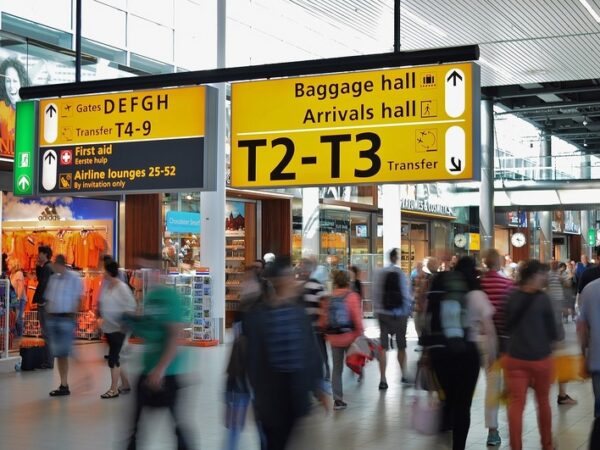The Schengen Area consists of 27 countries between which internal borders no longer exist. The European Union also comprises 27 countries but not the same as those in the Schengen Area, although there is a very large overlap. This is an important distinction as it directly affects whether an intending visitor to Europe will require a Schengen Visa, an ETIAS, or neither.
Most European countries are both Schengen and European Union members, with the following notable exceptions.
Members of EU but NOT Schengen:
Cyprus, Romania, Bulgaria and the Republic of Ireland
Members of Schengen but NOT EU:
Norway, Iceland, Liechtenstein and Switzerland
The new European Travel Information and Authorisation System, or ETIAS, is currently in the process of being rolled out and, once fully operational, will become a mandatory requirement for non-EU nationals wishing to visit any of the European Union member states.
This will apply to citizens of countries that currently enjoy visa-free access to the EU, including nationals of the United States, Canada, New Zealand, Australia, Japan and others. The ETIAS requirement will also apply to British passport holders when the current agreement runs out in 2023.
The ETIAS scheme is expected to be in force globally sometime in 2024 when all visiting foreigners will require ETIAS approval before entering any European country, which naturally includes many Schengen member states. The only visitors to Europe who will not require an ETIAS before arrival in Europe will be citizens of the EU member states.
Citizens of countries outside of the EU and Schengen area who do not currently enjoy visa-free entry to Europe are deemed “world travellers” and will require ETIAS approval and the relevant form of Schengen Visa if one or more Schengen countries are on a planned itinerary.
There are a number of types of Schengen Visa, and which type is required will depend upon the main purpose of the visit. Schengen Visas are issued for tourism, study, business, medical, and other purposes. Still, they all have one thing in common: visa holders are limited to how many days they can spend within the Schengen Zone before having to leave or risk fines, deportation or imprisonment. This is known as the 90/180 Day Rule!
The 90/180 Day Rule
In order to keep a record of and control, who enters the Schengen Area, the authorities established the 90/180 Day Rule. Under this strictly enforced regulation, Schengen Visa holders are permitted to remain within the confines of the Schengen Area for a maximum period of 90 days in a block of 180. The 90-day period commences on arrival in a Schengen member state and expires after 90 days have elapsed. This may sound simple, but many visa holders have often overstayed the allotted timespan due to confusion or ignorance.
This is not a desirable outcome as it can end up in substantial financial penalties, deportation orders, and difficulty in securing a Schengen Visa in the future. The rule is really quite simple but it is vital to understand how it works and avoid errors which will encourage the wrath of Schengen authorities.
How the 90/180 Day Rule Works
The rule can be broken down into two parts: the limit of 90 days and the allotted block of 180.
90 Day Limit
The 90-day limit begins the moment the Schengen Area is entered. Regardless of which Schengen country is the point of entry, the countdown begins on day one, and the visa holder must leave the zone on or before the 90th day. The 90 days may be used up in one block in one Schengen country or broken down into smaller periods and spread over multiple Schengen countries.
This means that the visa holder is permitted to enter one country and remain there for up to 90 days or could, for example, spend 30 days in the first Schengen country, move on to another for a further 30 days and then spend another 30 days in a third Schengen country. This is perfectly permissible once the 90-day total allowance is not exceeded. Once the 90 days are used, the visa holder must exit the Schengen Area completely or risk possibly severe consequences.
180 Day Block
From the first date of entry into the Schengen Zone, the visa holder can only remain in the zone for a maximum of 90 days during the following 180 days or (roughly) three months. However, this is what is called a “rolling time frame”, as the 180-day block does not end precisely six months after the first date of entry if the visa holder has left the Schengen Area in the meantime.
If, for example, the visa holder arrives in the Schengen Zone on the 1st of January, the six months should end (approximately) on the 30th of June. But if only 30 days have been spent in the Schengen Area in those six months, then the visa holder “carries over” the remaining 60 days that were unused.
The traveller could then decide to return to a Schengen country (or countries) for up to sixty days using the unused time as long as the visa has not expired. Upon returning to the Schengen Zone, the clock recommences its countdown but starts at 60 days (not 90) as this is the number of days remaining.
Understanding the concept of the “rolling time frame” and the stop-start method of the countdown when one enters and exits the Schengen Zone is where many travellers get confused and end up breaking the terms of the 90/180 Day Rule.
Common Errors
Although many of the errors made by Schengen Visa holders may seem obvious and avoidable, they occur surprisingly frequently. When travelling with a Schengen Visa, the following common errors should be avoided:
- Count all countries. Any time spent in a Schengen country counts against the 90 day limit and runs down the 180-day clock. Spending 10 days in Germany but also making two quick one-day trips into neighbouring France and returning to Germany for another 10 days counts as a total of 22 days and not 20. Always add all days spent in any Schengen member state in the total.
- Every minute counts. Even arriving just before midnight in a Schengen country counts as one full day when adding up the total days spent in the Schengen Area. The same is true of early morning departures from the zone. Every part of a day (no matter how short) counts as a full day.
- Three months and six months. Another common error is assuming that 90 days equals exactly three months or 180 days is precisely six months. This is rarely the case and can easily result in unintentionally overstaying the limit by a day or more. The exact number of days should be carefully counted when planning the use of a Schengen Visa.
Taking care and avoiding basic errors in calculating the number of days spent and days remaining will prevent overstaying and thus avoid what can be very harsh penalties.
Penalties and Punishment
Overstaying the Schengen Visa permitted time, even by a single day, will not go undetected as immigration authorities carefully monitor their security databases. Rule breakers will be caught and punished, but how severe the punishment will be, or what form it will take, depends on the severity of the breach and the country involved.
Different countries impose different rules, but penalties and punishments can include:
Deportation
Many Schengen countries will instantly deport visitors who are in breach of the 90/180 Day Rule.
Prison
If the traveller has been working while in the Schengen Zone or involved in criminal activity, an arrest is likely followed by a trial, sentencing and deportation upon release.
Fine
A fine is the most common penalty for breaches of the Schengen Visa regulations. The amount of the fine imposed varies across the Schengen Area but tends to increase with the amount of time the visa holder has spent there without proper permission.
Ban
A ban on entering the Schengen Area is a real possibility for those in serious breach of the regulations, such as visitors who have been working illegally or involved in criminal activity. A ban of two or three years is the usual punishment but can be much longer depending on the severity of the offences committed.
In rare cases, no penalties or fines are imposed on travellers who break the rules, but these are very few and far between. An accident, illness or unforeseen circumstances may have prevented a traveller from leaving on the correct date, and these may be taken into consideration by the authorities. Still, there is no guarantee of escaping some form of punishment.
Even when a traveller manages to avoid any fine or other penalty, problems may still be ahead. Records are kept about all travellers overstaying the time limit, which can result in problems, even a refusal when applying for a new Schengen Visa.
The ETIAS Effect
The introduction of ETIAS will have little or no effect on those travellers who currently require a Schengen Visa to visit many European countries. However, if the desired destination country is a member of the European Union but not in Schengen, then an ETIAS will become a necessity after 2024.
As a general rule, all non-EU nationals wishing to enter the EU or Schengen Area will require ETIAS approval by the end of 2024, including British citizens.
The ETIAS is similar to a visa in that it pre-screens intending visitors before granting permission to enter the European arena. Once the ETIAS is granted, the holder may then enter any of the EU member states, including those that are also part of the Schengen Area and is subject to the same 90/180 Day Rule and attached conditions that apply to a Schengen Visa.




